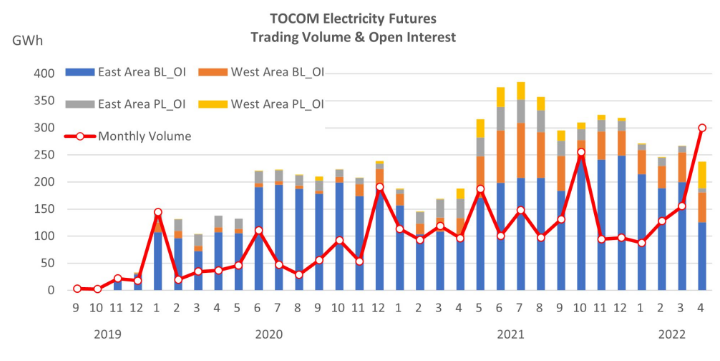TOCOM Energy
JPX Energy Market Updates(Sep. 21, 2022)
Oil prices came under heavy selling pressure after data revealed US inflation remains at elevated levels, which increases the likelihood of another rate hike when the Federal Reserve meets this week, dampening the prospects for future economic growth.
Prices recovered during Friday on concerns that Russia may make retaliatory cuts to crude supplies after the German government seized Rosneft’s assets. Reports of disruption to exports following an oil spill at Iraq’s Basrah port also helped to steady oil prices.
Middle East benchmark Dubai crude was slightly higher on the week ending 16 September, while the sharp selloff in the middle distillates market stabilized heading into the weekend. The prompt market structure also firmed with the key M1/M3 spread around $0.50/b higher on the week at $6.20/b.
Data from the US Labor Department showed that the consumer price index climbed 0.1% last month from July, and gained 8.3% from the year-earlier period, economists had expected a small monthly decline amid falling energy prices, paving the way for the U.S. central bank to perhaps slow the pace of its rate hikes in coming months.
But the report showed accelerating inflation in services and a particularly worrisome rise in the cost of rent, which tends to be sticky from one month to the next. November will be a key window to see if the Fed pivots, economic and inflation data over the next 1-2 months will be crucial.
The softer tone last week was also set by the International Energy Agency (IEA), which forecasted that growth will continue to lose momentum, slowing from 3.5 mb/d in 1H22 to only 1.1 mb/d in 3Q22 before grinding to a halt in 4Q22. Global oil demand remains under pressure from the faltering Chinese demand and an ongoing slowdown in OECD economies.
The IEA also estimates that weaker demand was partly offset by the expectation that a significant amount of gas to oil switching, which is estimated to average 700 kb/d during 4Q22 and 1Q23, double the level of a year ago.
As a result, for 2022 as a whole, global oil demand will climb by 2 mb/d, down 110kb/d from last month’s report, before advancing by another 2.1 mb/d next year to exceed pre-pandemic levels.
In 2022, the OECD will account for most of the total rise, while non-OECD countries will cover three-quarters of 2023’s gains if China reopens as expected. IEA estimate that global oil market will be oversupplied in 2H22, by close to 1 mb/d, and roughly balanced in 2023.
Refinery throughput at China, slumped by 6.5% in August from a year earlier and remained close to the levels from July. However, rumors emerged that China could soon issue a new batch of 15 million tons fuel export quotas for its refiners as the government is expected to increase export quotas to take advantage of high distillate cracks.
The total Chinese quota so far this year would rise to the level of the whole of 2021 and would mark a v-turn in export quota policies of recent months. While crude and other feedstock demand will be bolstered in China, the additional volume would likely be made up of discounted incremental barrels from Russia.
On the other hand, the huge potential volume has shaken the global product markets, especially gasoil. Diesel cracks had been the mainstay of the global refining industry since the mid-summer slump in gasoline margins, so the collapse in distillate values could tip many refiners into negative territory and reduce run cuts with European refiners taking the biggest blow as they are most exposed to high energy costs.
OPEC in its newly released monthly report maintained its forecast for strong global oil demand growth in 2022 and 2023, oil demand is estimated to increase by 3.1 million barrels per day in 2022 and 2.7 million barrels per day in 2023 based on indications that major economies are doing better than expected despite unfavorable factors such as rising inflation.
Now opinions among agencies and analysts on the oil market were divided amid the mixed pricing signals, although most expect oil prices to remain volatile going forward as global oil inventories remain at a critical low level. Data from the IEA showed that Global observed inventories declined in July for the third straight month, by a further 25.6 mb, and are close to their lowest level since at least 2016. While changes in the fundamentals certainly underpin these price developments, declining future market liquidity has aggravated volatility, which in turn has forced players to further cut positions.






